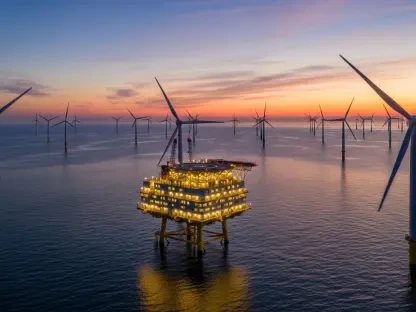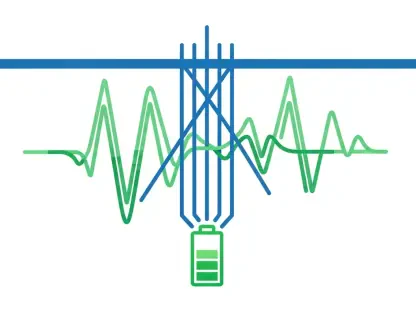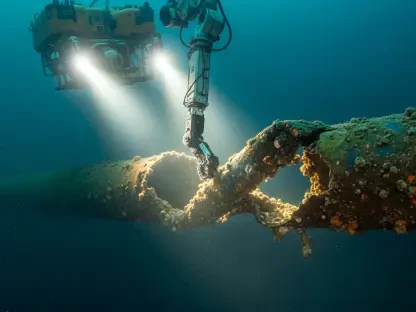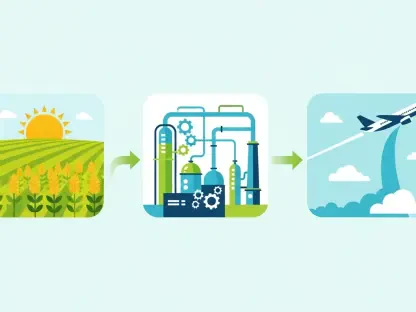The global energy landscape is rapidly evolving toward sustainability, with hydropower taking center stage amidst this transition. Hydropower’s reliability comes from its ability to provide continuous energy in contrast to intermittent sources like solar and wind, which depend on unpredictable weather conditions. However, the increasing demand for consistent and stable energy puts significant stress on its infrastructure, particularly on hydraulic turbines. These turbines are experiencing heightened fatigue due to more frequent startup cycles necessitated by modern energy grids. Examining how machine learning can alleviate this fatigue and optimize turbine operations reveals new possibilities for enhancing hydropower efficiency and lifespan.
The Growing Role of Hydropower in Energy Stability
Renewable Energy’s Inconsistencies and Hydropower’s Importance
The shift toward renewable energy sources like solar and wind has introduced challenges associated with their inherent unpredictability. These sources rely heavily on conditions such as sunlight and wind patterns that fluctuate, leading to potential instabilities in energy supply. Consequently, hydropower emerges as a critical stabilizer in this energy mix due to its reliable and near-constant generation capability. Its ability to quickly respond to fluctuations and maintain grid stability strengthens its significance in modern energy infrastructures. Hydropower’s role extends beyond energy generation, serving as a buffer that manages grid frequency and voltage, ensuring a balanced and sustained energy delivery.
Hydropower’s Shift in Operational Demands
As decarbonization efforts intensify, hydropower stations are encountering operational shifts, particularly in the frequency and nature of turbine startups. Traditionally, hydraulic turbines experienced limited startup cycles, usually aligning with seasonal or supply-demand changes. However, contemporary energy demands have caused turbines to endure frequent startups, with projections reaching up to 500 cycles annually. This raises operational stress significantly, especially on runner blades, leading to accelerated wear and fatigue. These challenges underscore the necessity for advanced technologies that can optimize turbine operations and mitigate fatigue-related issues.
Addressing Fatigue Damage in Turbine Components
What is Fatigue Damage?
Fatigue damage within hydraulic turbines is a critical consideration as it impacts the overall reliability and safety of hydropower systems. It is recognized as the gradual degradation of turbine components due to repeated stress cycles, which are exacerbated by cyclic load fluctuations. Cracks that originate during the manufacturing stage may propagate under these operational conditions, often leading to component failure. Components such as runner blades bear the brunt of this fatigue, as they endure harsh environmental conditions and dynamic force interactions during turbine operation. Understanding fatigue damage involves examining the interaction between fluid pressures and turbine structure, both of which contribute significantly to mechanical stress.
Traditional Approaches to Assessing Fatigue
Historically, the assessment and prediction of fatigue damage in turbine components relied heavily on physical model testing. These reduced-scale models aimed to replicate the complex geometries and intricate stress interactions present in full-scale turbines. However, translating experimental findings to actual systems often posed challenges due to the disparity in complexity and scale. The intricacy of turbine designs complicated accurate model creation, resulting in predictions that might fail to capture the nuances of full-scale operations. Consequently, there is a growing interest in incorporating data-driven methods that can better adapt to the evolving conditions of modern hydropower systems.
Machine Learning: Revolutionizing the Hydropower Landscape
The Introduction of Machine Learning to Turbine Optimization
Machine learning appears as a transformative player in addressing the fatigue challenges faced by hydraulic turbines. By employing sophisticated algorithms, machine learning offers predictive insights that traditional methods might overlook due to constraints in scalability and adaptability. Researchers are advancing these models to predict fatigue and suggest optimal startup sequences that minimize mechanical stress. These efforts showcase the potential of machine learning in redefining turbine operations, moving toward a more predictive maintenance model rather than reactive approaches. By leveraging deep neural networks, predictive models have improved significantly in accuracy, offering promising benefits in the optimization of turbine operations.
Developing Optimal Startup Sequences Through Machine Learning
In an attempt to curtail fatigue, specific machine learning models have been developed to focus on optimizing startup sequences. These models aim to analyze and prioritize operational pathways that promote minimal stress transmission to turbine components during startup. Models like the input time-frequency deep neural network (iTF-DNN) are integral to this approach, processing experimental stress data while factoring in diverse startup trajectories to identify fatigue-sensitive sequences. The model’s capability in achieving over 97% prediction accuracy highlights its efficacy in formulating optimal operational strategies. When coupled with quantitative methodologies like Rainflow-counting, such models offer comprehensive insight into fatigue estimation and mitigation.
Experimentation and Validation of Machine Learning Models
Methodologies Supporting Fatigue Mitigation
Machine learning models, reflecting remarkable prediction accuracy, facilitate new strategies to mitigate fatigue in hydropower systems. One instrumental method employed is the optimization of startup control trajectories through algorithms such as Dijkstra’s algorithm, which rationalizes the reduction of fatigue as a shortest-path problem. By establishing operational constraints, such as guide vane angular velocity and turbine acceleration, the algorithm computes startup paths that lower stress impacts. These optimized trajectories aim to balance operational efficiency with minimal fatigue induction, laying a foundation for robust operational practices.
Demonstrated Efficiency of Optimized Models
The experimental efficacy of optimized machine learning models was put to the test through comprehensive campaigns examining stress dynamics. Comparing induced stresses under optimized conditions against conventional trajectories yields impressive results, showing fatigue reduction by over 99.5%. These findings underscore that traditional startup sequences often introduce stress equivalent to over 100 days of optimal operation, whereas optimized strategies reveal merely a fraction of these impacts. While reduced-scale models provide insights into stress patterns, validation in real-world applications affirms the machine learning model’s potential adaptability and robustness.
From Reduced-Scale Models to Full-Scale Potential
Challenges of Scaling Insights from Models
Despite the adaptability of reduced-scale models in understanding stress patterns and fatigue dynamics, translating these insights to full-scale systems poses inherent challenges. The complexities intrinsic to complete turbine systems necessitate caution in adopting reduced-scale model findings universally. Real-world applications require thorough validation to ensure model efficacy and relevance in diverse operating conditions. Nonetheless, the success of machine learning models in small-scale contexts offers promising prospects for scalability, potentially accommodating newer operational demands presented by frequent startup cycles and varied energy grids.
Bridging the Gap Between Models and Systems
Scaling machine learning models from reduced-scale environments to full-fledged hydropower plants represents a frontier in energy optimization efforts. By integrating insights drawn from these models with practical constraints, there emerges a possibility of enhancing hydropower systems to meet emerging demands effectively. The model’s ability to adapt insights from reduced-scale tests to full-scale operations without compromising accuracy suggests a promising direction for hydropower optimization. Embracing this adaptability is crucial as energy infrastructures increasingly incorporate AI-driven solutions to bolster stability and improve sustainability.
Future Considerations and Impacts of Machine Learning
Implications for Energy Policies and Infrastructure
The application of machine learning in hydropower systems extends beyond technical advancements, influencing broader energy policies and infrastructure strategies. As machine learning introduces predictive insights into turbine operations, energy sectors can redefine maintenance schedules and operational protocols. The focus shifts from reactive measures to predictive optimization, fostering resilience in hydropower systems. This aligns with evolving energy policies emphasizing reliability and long-term sustainability in renewable sources. Embraced adequately, these advancements can contribute immensely to achieving comprehensive energy goals, reducing reliance on fossil fuels, and mitigating environmental impacts.
Positioning Hydropower in Tomorrow’s Energy Framework
The global energy landscape is transitioning rapidly towards sustainable solutions, with hydropower emerging as a crucial element of this shift. Renowned for its reliability, hydropower provides continuous energy, unlike solar and wind energy, which are subject to fluctuations due to unpredictable weather. Nevertheless, the demand for stable and consistent energy has surged, exerting considerable pressure on hydropower’s infrastructure, especially hydraulic turbines. These turbines are increasingly experiencing fatigue, primarily because modern energy grids necessitate more frequent startup cycles. Addressing this challenge, the exploration of machine learning technology presents promising avenues to mitigate turbine fatigue and enhance operations. Machine learning algorithms can optimize turbine functions by analyzing vast data and predicting the most efficient operational patterns, thus extending the turbines’ lifespan and boosting overall hydropower efficiency. By integrating advanced technology within their frameworks, hydropower systems can not only improve their durability but also contribute significantly to the global push for sustainable energy solutions, reinforcing their position as a vital player in the ongoing energy transition.









